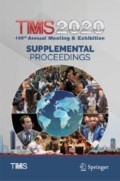Abstract
The multiaxial 3D printing process can reduce the manufacturing time and open the new way for the production of graded materials. It will also expand the application of sustainable additive manufacturing for repair and retrofit purposes. In this study, the effect of counter-gravity deposition on interlayer fracture energy of extruded PLA material was investigated. The rectangular samples with one-layer thickness were 3D printed at three orientations of 0°, 90°, and 180° with respect to the direction of gravity force. The samples were subjected to tensile loading perpendicular to the interlayer areas, and the fracture energy was obtained from the calculation of the area under force–displacement curves. The effect of the nozzle orifice diameter on fracture energy was assessed in conjunction with the deposition orientation . The ratio of nozzle orifice diameter to deposition height was 1 for all samples that were made with different nozzle diameters of 0.6 and 0.8 mm. The interlayer fracture type was observed for all samples. For both nozzle diameters, the statistical analysis of the interlayer fracture energies showed no significant difference for the samples that were 3D printed at different orientations.
Access this chapter
Tax calculation will be finalised at checkout
Purchases are for personal use only
References
Ngo TD, Kashani A, Imbalzano G, Nguyen KTQ, Hui D (2018) Additive manufacturing (3D printing): a review of materials, methods, applications and challenges. Compos Part B-Eng 143:172–196. https://doi.org/10.1016/j.compositesb.2018.02.012
Ligon SC, Liska R, Stampfl J, Gurr M, Mülhaupt R (2017) Polymers for 3D printing and customized additive manufacturing. Chem Rev 117:10212–10290. https://doi.org/10.1021/acs.chemrev.7b00074
Song Y, Li Y, Song W, Yee K, Lee K-Y, Tagarielli VL (2017) Measurements of the mechanical response of unidirectional 3D-printed PLA. Mater Des 123:154–164. https://doi.org/10.1016/j.matdes.2017.03.051
Chacón JM, Caminero MA, García-Plaza E, Núñez PJ (2017) Additive manufacturing of PLA structures using fused deposition modelling: effect of process parameters on mechanical properties and their optimal selection. Mater Des 124:143–157. https://doi.org/10.1016/j.matdes.2017.03.065
Aliheidari N, Christ J, Tripuraneni R, Nadimpalli S, Ameli A (2018) Interlayer adhesion and fracture resistance of polymers printed through melt extrusion additive manufacturing process. Mater Des 156:351–361. https://doi.org/10.1016/j.matdes.2018.07.001
Noori H (2019) Interlayer fracture energy of 3D-printed PLA material. Int J Adv Manuf Technol 101:1959–1965. https://doi.org/10.1007/s00170-018-3031-5
Popescu D, Zapciu A, Amza C, Baciu F, Marinescu R (2018) FDM process parameters influence over the mechanical properties of polymer specimens: a review. Polym Test 69:157–166. https://doi.org/10.1016/j.polymertesting.2018.05.020
Mohamed OA, Masood SH, Bhowmik JL (2017) Experimental investigation of time-dependent mechanical properties of PC-ABS prototypes processed by FDM additive manufacturing process. Mater Lett 193:58–62. https://doi.org/10.1016/j.matlet.2017.01.104
Jung JW, Lee J-S, Cho D-W (2016) Computer-aided multiple-head 3D printing system for printing of heterogeneous organ/tissue constructs. Sci Rep 6:21685. https://doi.org/10.1038/srep21685
Butt J, Onimowo DA, Gohrabian M, Sharma T, Shirvani H (2018) A desktop 3D printer with dual extruders to produce customised electronic circuitry. Front Mech Eng 13(4):528–534. https://doi.org/10.1007/s11465-018-0502-1
Pilkey WD, Pilkey DF (2008) Peterson’s Stress Concentration Factors, 3rd edn. Wiley, Hoboken, New Jersey, p 84
Author information
Authors and Affiliations
Corresponding author
Editor information
Editors and Affiliations
Rights and permissions
Copyright information
© 2020 The Minerals, Metals & Materials Society
About this paper
Cite this paper
Noori, H., Lytle, C.C. (2020). Effect of Counter-Gravity 3D Printing on PLA Interlayer Fracture Energy. In: TMS 2020 149th Annual Meeting & Exhibition Supplemental Proceedings. The Minerals, Metals & Materials Series. Springer, Cham. https://doi.org/10.1007/978-3-030-36296-6_23
Download citation
DOI: https://doi.org/10.1007/978-3-030-36296-6_23
Published:
Publisher Name: Springer, Cham
Print ISBN: 978-3-030-36295-9
Online ISBN: 978-3-030-36296-6
eBook Packages: Chemistry and Materials ScienceChemistry and Material Science (R0)

